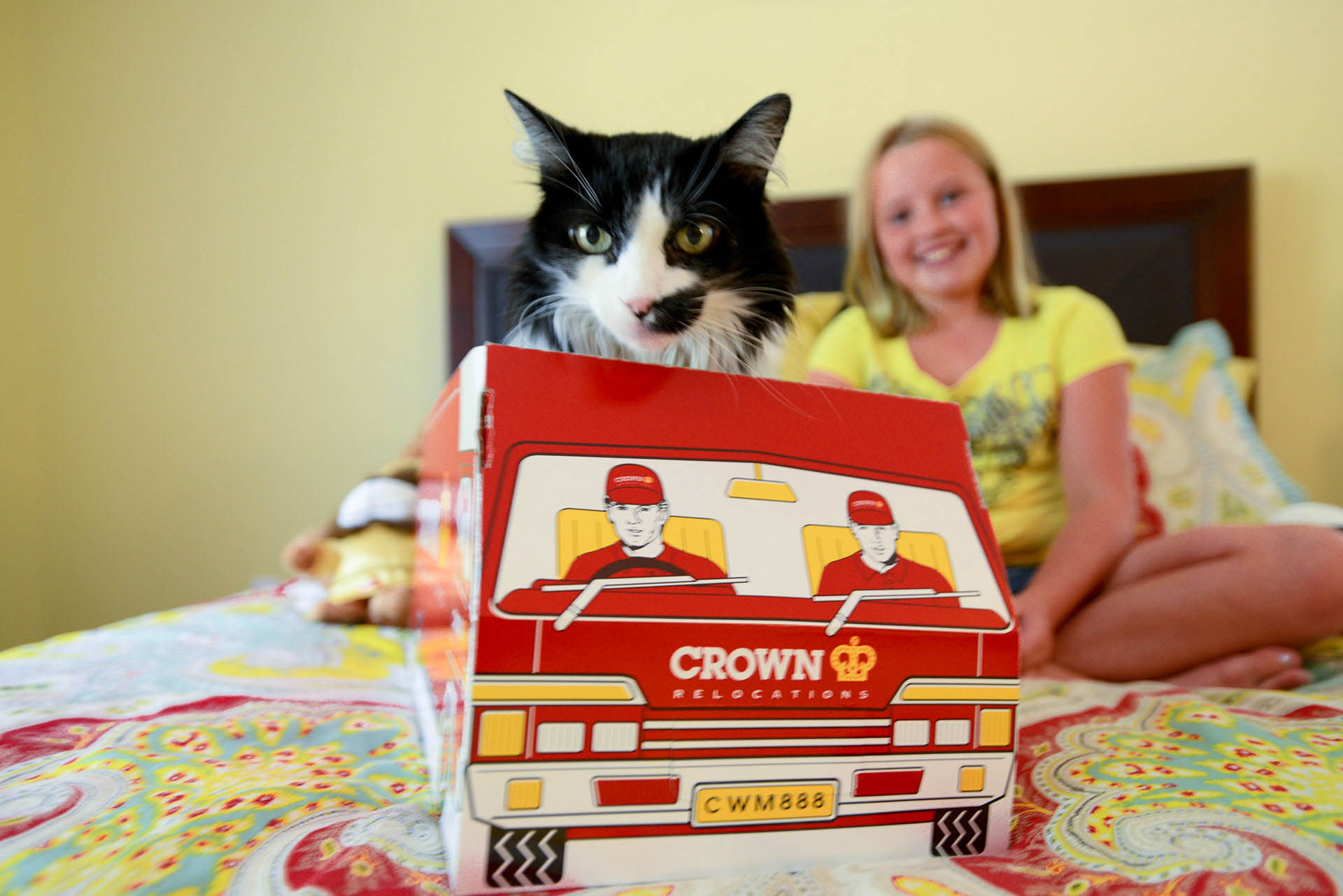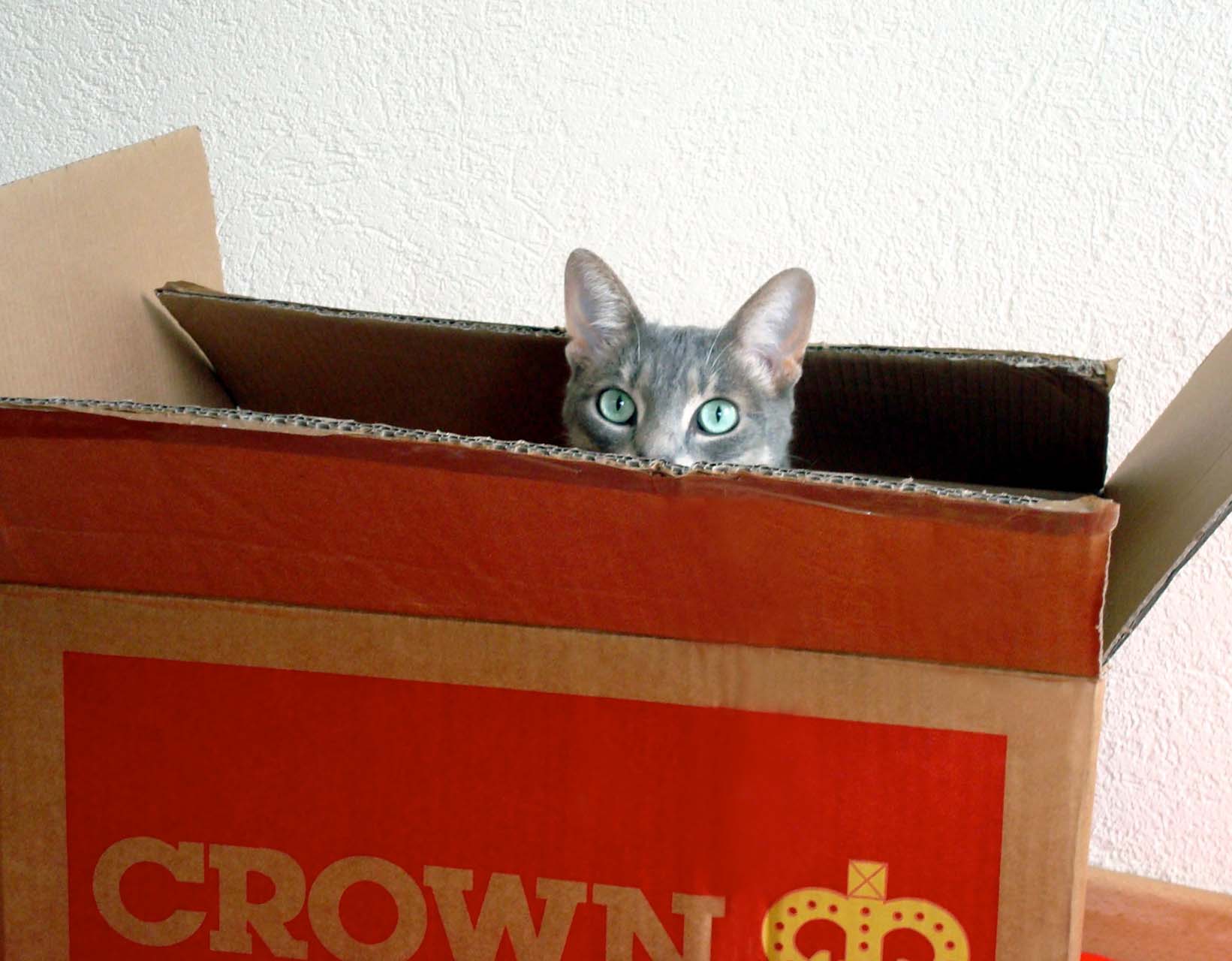
Moving interstate or overseas with a cat can be tough for a lot of cat owners as they are not known for their affinity for change.
Most cats are highly territorial creatures and transitioning from the home they’re used to into a new home can cause some stress—even for the most laid-back ones.
So, in addition to planning the human side of your move, you will have to plan your cat’s relocation journey, too. The key to a smooth feline move is advance planning, so start as soon as you know you are moving abroad.
What is so unique about moving with cats?
Did you know that cats do have the ability to sense your emotions? If you are planning to move interstate or overseas soon, you should prepare yourself to be calm and patient since moving with cats may be a complex and challenging process.
Your kitten can notice when you’re stressed out or anxious, which can stress them out as well and eventually, impact their health as a result. That’s why you should keep in mind that every relocation, especially an international one, may become stressful both for your pet and yourself. Read through the guide below to find out how you can make moving with your feline friend less stressful.

Research and planning:
1. Is your cat allowed?
Country such as Singapore, for example, doesn’t allow cats in certain residential types, and some landlords may not necessarily allow pets. You need to know where you will live before you can be sure your cat is welcome.
Also, not all cat breeds are qualified to travel. Many countries don’t accept incoming certain cat breeds that have wild heritage, such as Bengal or Savannah cat crosses. Most of us have common domestic breed cats, but if you are not sure about your cat breed, be sure to check on this.
2. Compare travel options
As soon as you know you’re moving, get to work figuring out how you’re going to be traveling and which airline you will be traveling with. Planning and working out the kinks in advance will give you a lot of relief, and this will free you up to focus on all of the other things that you need to get done.
Find out the length of travel for your travel options. Would they be less stressed sitting on a train with me rather than being put on a plane? Or was it easier for them to just get there in the fastest route possible?
Pre-move preparation:
1. Gather all required documents
Moving overseas with cats gets tricky because of different regulations and policies based on the country. While some countries make it really easy to import your pet, others have some strict requirements.
Most, if not all countries will require:
- Latest vaccine records
- Veterinary verified health certificate
- Rabies vaccination certificate or waiver
- Microchip
Some countries, but not all, will require additional:
- Rabies blood tests
- Pet passport
- Import license
This should be done in advance as some countries have a waiting period between when the paperwork is filed, and the animal is allowed to enter the country. You should also find out if there is a mandated quarantine period.
2. Talk to your vet, and find a new one
Visit your local vet to discuss your upcoming move. Your cat should be examined to make sure that they’re healthy enough to make the trip, update all necessary vaccinations and health information, and you can also discuss some best practice advice that can help with your cat’s anxiety during travels.
Equally important is that you have a vet lined up in your new city. Then, start the process of transferring your cat’s medical information as early as you can. So that when you arrive at your new destination, your vet will have everything your cat needs before your first appointment with them.
3. Update microchip details
A new home and environment won’t immediately be relaxing for your cat. With all the disruption of moving day and lots of open doors as you move in boxes and furniture, it can be easy for your cat to run out.
So, we recommend getting a new tag or implanting a microchip with your new address and telephone number and putting them on right before the move. If your cat is microchipped, make sure it is up to date with your new address. That way, if they escape at any point during the move, you can easily trace their location.
4. Finding the right crate
If you’re planning on moving somewhere far away, you need to find a safe and comfortable travel crate for your furball. There is a good rule of thumb for an optimal crate size is by adding 4 inches to the height and length of your cat.
Without fanfare and as far in advance of your move as you can, place the crate out and stick a toy and give them some treats while they are in there. This gives your cat a chance to investigate the space at their own pace and can help associate it with a safe and positive experience. While you’re at it, spray the crate with some calming pheromone spray that you can use during the move too.
As you get closer to the move day, start to encourage your cat to spend a little bit more time in the carrier by feeding them some meals in there, and making the crate part of playtime. With enough conditioning, the crate should become a lot less scary—and a lot more comforting.
5. Let them get used to moving supplies
When it comes to packing, there is one great thing about it – cats love carton boxes. Before getting into the nitty-gritty of packing, do leave out a few boxes and other packing supplies for your cat to explore. When they do start examining them, give your furbaby some treats or praises with the presence of the moving supplies to create positive associations with the items.
Of course, the unfamiliarity with packing supplies could be an additional trigger for stress. In that case, spraying some calming pheromone on them from time to time will be just enough to alleviate your cat’s anxiety. When the time comes to get started with packing, they’ll be less anxious with all these weird new items taking over their space.

Moving day:
1. Don’t overfeed your cat hours before departure
In order to minimise the chances your cat gets sick as much as possible, try giving your cat little doses of food before traveling. But don’t starve them either.
During the move, your cat’s stomach can get upset due to stress. Train your cat to get used to it by going on a strict diet several days before the trip and cutting down on the amount of food – that measure can prevent unpredictable events while traveling, especially if your animal is prone to getting sick in those situations.
2. Keep your cat safe during the flight
In addition to reducing meals, there are other measures you should take for your cat’s comfort and safety throughout the journey:
- Avoid traveling during extreme temperatures
- Avoid traveling during the peak holiday season
- Use direct flights if possible
- Use tranquilisers only if your vet prescribed them
- Food and water bowls/access
- Documents, proof of vaccinations and rabies, and any ID tags or names attached to the crate
- Pee pad lined on the bottom of the crate
We understand that your pet is an important part of your family, therefore put the best care and attention into coordinating their move, to ensure a smooth and efficient service from collection through to delivery to your destination. Crown only works with certified members of IPATA. This organisation sets the professional standards and ethics involved in animal transport, monitoring the performance of its members.





